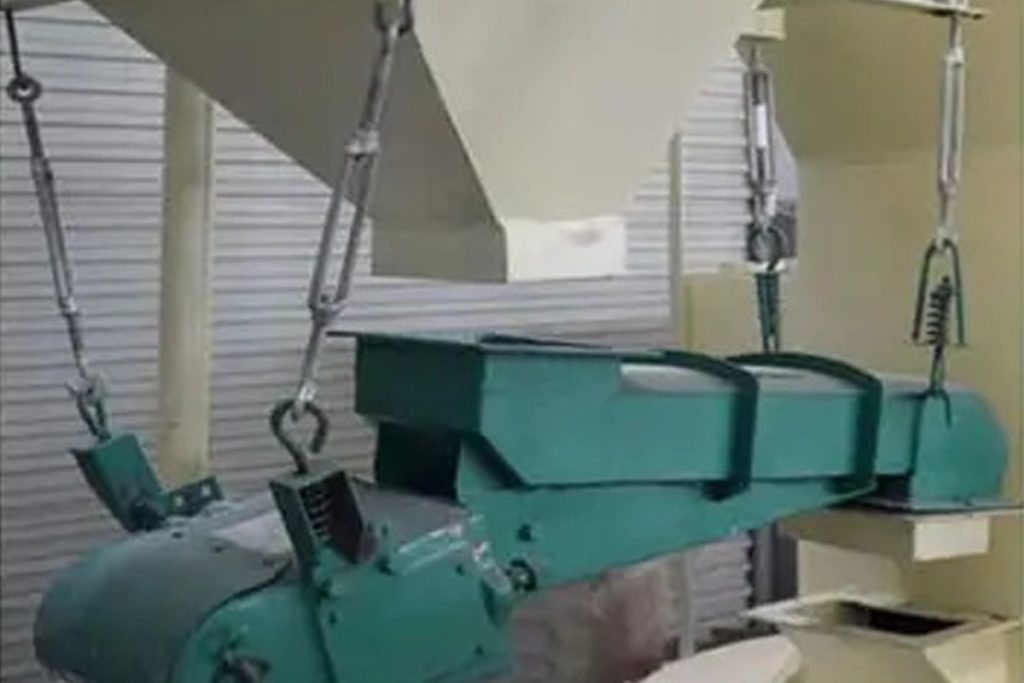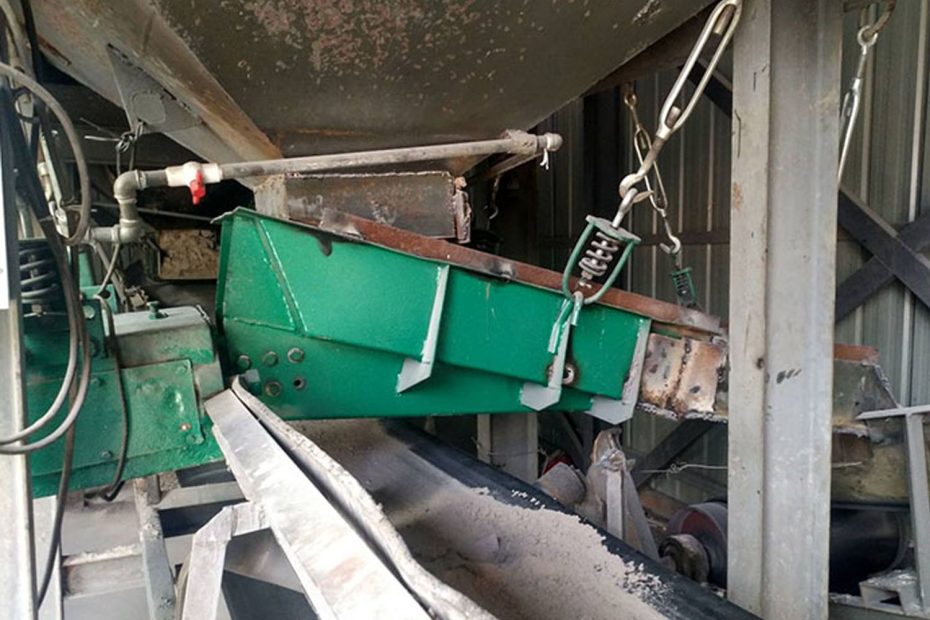Vibrating feeder, also known as vibrating feeder, uses the rotation of the eccentric block in the vibrator to generate centrifugal force, so that the movable parts such as the screen box and vibrator make forced continuous circular or quasi-circular motion. The motor drives the active shaft through the V-belt, and then the gear on the active shaft meshes with the passive shaft to rotate. The active and passive shafts rotate in opposite directions at the same time, so that the trough body vibrates and the material flows continuously to achieve the purpose of conveying materials.
Three installation methods of vibrating feeder
The installation methods of vibrating feeder can be divided into hanging installation, seat installation and seat hanging mixed installation.
Hanging installation
- The wire rope suspension method is more reliable, the wire rope is difficult to loosen, and the wire rope is flexible, the suspension is relatively stable, and it is not easy to generate noise, so it is widely used, but the adjustment of the wire rope length is not convenient enough.
- The suspension rod suspension method is simple and has fewer parts, but the adjustment amount of the suspension rod length is very small, and it is easy to generate noise due to friction.
- The turnbuckle screw suspension method is convenient for length adjustment, but the turnbuckle screw is easy to buckle, and the reliability is not as good as the first two methods. There are more parts and it is easy to generate noise.
Suspension installation, usually the upper ends of the two front shock absorbers are opened to both sides at a certain angle, often 10°, to enhance the stability of the feeder during operation.
Pedestal installation: The pedestal installation does not require auxiliary parts such as suspension rods, and can be directly installed on the foundation or on the steel structure chassis. The equipment is relatively stable after installation; but the foundation must be flat.
Pedestal mixed installation: This method has the characteristics of the above two installation methods. The vibrating feeder is usually installed and used with the discharge end tilted 10° downward. When conveying difficult-to-transport materials, the downward angle of the trough can be appropriately increased, but the maximum downward angle generally does not exceed 15°.
Key Points Of Nozzle Configuration
Since the vibrating feeder usually receives materials under the silo or hopper, the pressure of the material column in the silo will obviously affect the amplitude of the silo and the normal feeding of the feeder after it acts on the trough of the vibrating feeder. Therefore, especially for large and medium-sized vibrating feeders, it is required to configure an inclined nozzle at the bottom of the silo during installation and use to reduce the impact of the silo pressure on the vibration of the feeder trough.
In addition, in order to avoid severe wear on the inner surface of the two sides of the vibrating feeder trough, side baffles connected to the nozzle are usually required.
The opening D of the silo mouth is determined according to the maximum block size of the material and the required material layer thickness.
In order to ensure that the trough can vibrate freely without obstruction, it is required to maintain a certain gap between the feeder trough and the nozzle wall and the side baffle. According to the different specifications of the vibrating feeder, A=20~30mm, C=20~70mm, and E=10~30mm are required. Small-sized vibrating feeders take a small value, and large-sized vibrating feeders take a large value.
In addition, in order to prevent the bottom surface of the side baffle from hindering the movement of materials to the discharge end, a small angle is required between the bottom edge of the side baffle and the bottom of the trough from the rear end of the trough to the discharge end.
Secondly, a gate should be installed at the discharge port of the silo to adjust the thickness of the material layer or close the discharge port during equipment maintenance.

Installation requirements and precautions for vibrating feeders
- The vibrating feeder should generally be installed as a whole at the working position. If the site conditions require the trough and the exciter to be disassembled and installed, when installing the exciter on the trough, it is necessary to pay attention to tighten the connecting bolts between the exciter and the trough carefully.
- For suspended installation, the four shock absorbers must be adjusted and balanced, and the horizontal level of the trough should be checked, otherwise the material will shift to one side during the feeding process.
- Because the vibrating feeder may swing during operation, the vibrating feeder should be kept at a certain distance from other nearby objects to avoid collision. The minimum longitudinal spacing is 50~100 mm, and the minimum transverse spacing is 25~50 mm.
- After installation, the inspection screws on the upper and lower sides of the vibrator housing must be loosened for the electric vibrating feeder. Otherwise, the vibration of the electric vibrating feeder will be hindered when starting.
- The housing and control box of the electric vibrating feeder are grounded according to the electrical equipment installation regulations.
Conclusion
The vibrating feeder has a simple structure, uniform feeding, good continuous performance, and easy operation. It is widely used in crushing and screening combined equipment in metallurgy, coal mining, mineral processing, building materials, chemical industry, abrasives and other industries.
